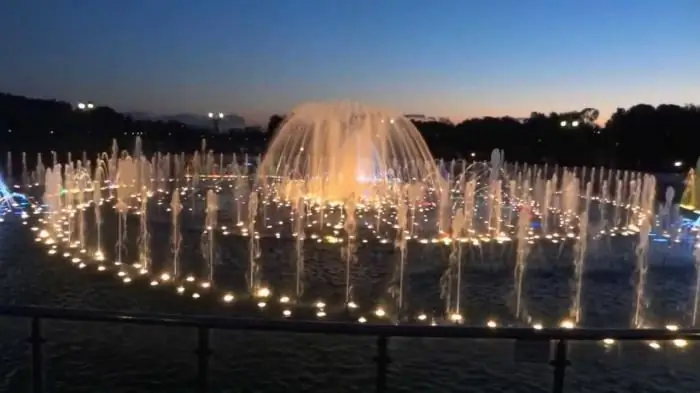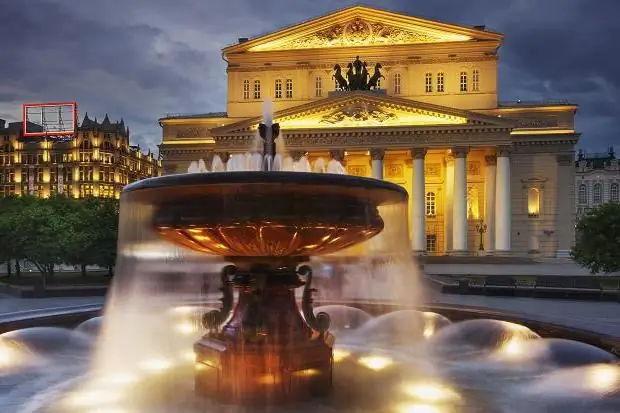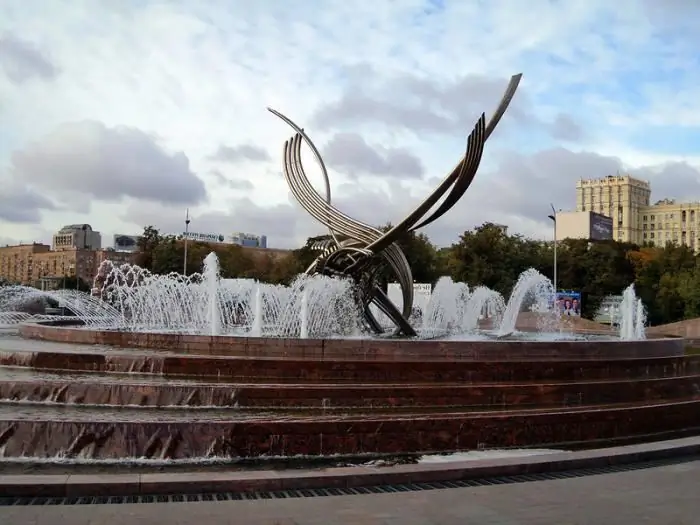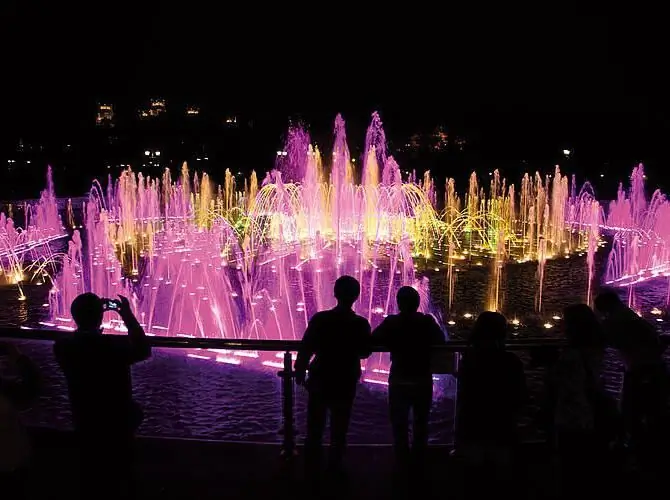- Author Harold Hamphrey [email protected].
- Public 2023-12-17 10:06.
- Last modified 2025-01-24 11:10.
From ancient times, people began to build fountains. Moscow is famous for many such structures that were built in estates, on the territory of palaces. But they began to decorate streets, parks, boulevards with them especially actively in the first half of the 20th century. Today there are 700 various water structures in the capital. The fountain season in Moscow is from early spring to autumn.
Meaning of fountains
They have always played a big role in the lives of native Muscovites and guests of the capital. Some people remember their first date, which took place in the square near the fountain on Pushkin Square, others will never forget their wedding day at the magnificent cascade that can be seen on Poklonnaya Gora.

It is a pity that today we often perceive this splendor as a kind of device that tells us about the change of season. Turned off - it means winter is coming, turned on - it means summer is ahead. Preoccupied with our problems, we run past these magnificent structures without appreciating their beauty. Let's stop running for a moment and look at somefountains that adorn our capital.
Fountain at the Bolshoi Theater
This grandiose monument is known not only to Muscovites, to all residents of the former Soviet Union, but also to many citizens of foreign countries. It is the hallmark of the capital.
It was built in 1835. The author of the project - I. Vitali - a well-known sculptor at that time. His creation became the first public fountain in Moscow, although similar designs have been known since the reign of Alexei Mikhailovich. It was he who organized water fun in Kolomenskoye using "overseas curiosities".

In Soviet times, it was planned to place a fountain on this site as early as the beginning of 1940. V. I. Dolganov worked on the creation of the project, but all the plans of urban planners were destroyed by the war. This issue was returned only after the Great Victory. In 1987, the fountain and square near the Bolshoi Theater were dismantled. The fountain was restored only ten years later. The opening was timed to coincide with the 850th anniversary of our capital. But it was a different fountain, developed in the workshop of the Mosproekt-2 company.
The fountain was erected on a makeshift podium in the center of the round square. The composition consists of three bowls, in which there are two types of vases. Spectacular night illumination with colorful lanterns adds theatricality to this magnificent water feature.
Today many fountains work in the capital. Moscow is proud of these unique structures, but the attitude towards the design of the Bolshoi Theater was and remains special to this day. Perhaps because this placechose to meet our dear veterans of the Great Patriotic War on the day of the Great Victory.
"Mermaid" on Myasnitskaya
The fountains of Moscow, the photos of which you see in our article, are all very different. They were built at different times, designed by different architects, but they are all infinitely dear to the residents of the capital. Like, for example, the Mermaid fountain located on Myasnitskaya Street. It is located in a small but cozy square near the Stroganov Art School.
Today there is no reliable information about who is the author and performer of the water maiden. This concrete sculpture in the center of the bowl is the body of a beautiful girl. It's beautifully curved. The fish tail and head of the maiden are colored pink, blue and brown.
Abduction of Europe
There are very unusual and original fountains in the capital. Moscow received as a gift from the Belgian capital, the city of Brussels, a composition called "The Abduction of Europe". It was installed in 2002 at the Kievsky railway station. Its author is the avant-garde sculptor Olivier Strebl.

The composition of the fountain is based on Greek mythology. In the interweaving of 18-meter pipes, the figure of a bull is visible. It is not easy to see the figure of stolen Europe among the water jets, although experts say that the image of a girl is still present in the composition. It is symbolized by skillfully curved pipes, visualizing charm and femininity.
The structure, made of stainless pipes, is located in the granite bowl of the light-dynamic fountain. Its diameter is 26 meters.
Singing fountains in Moscow
Probably, even the native Muscovites have not seen all the water facilities that are in their city. As we have already said, in the capital you can see a variety of fountains. Moscow treats old structures with care, many of which are historical monuments today.
Nevertheless, special effects water constructions are of the greatest interest. Singing fountains in Moscow every evening gather not only tourists from all over the world, but also local residents. The largest such fountain is located in the Tsaritsyno nature reserve, where Empress Catherine II liked to relax.

It was opened in 2007. The fountain is located in a natural reservoir. Its diameter is 55 meters, depth is 1.5 meters. The design consists of 900 jets. The computer controls the direction of flowing water, changing colors, music, according to a pre-designed program. It uses 2 works by P. I. Tchaikovsky (“March” and “W altz of the Flowers”) and two melodies by Paul Mauriat. This beautiful fountain operates only in the spring and summer season. During the rest of the year, it is covered with a protective awning.
There is also a singing fountain in Gorky Park. To see its color effects, you need to come to the park at 22.30. The performance lasts 30 minutes.
In 2005, on the occasion of the 60th anniversary of the victory in the Great Patriotic War, the Music of Glory fountain was installed on the Square of Glory near the Kuzminki metro station. This building was not created for entertainment, but as a monument.






